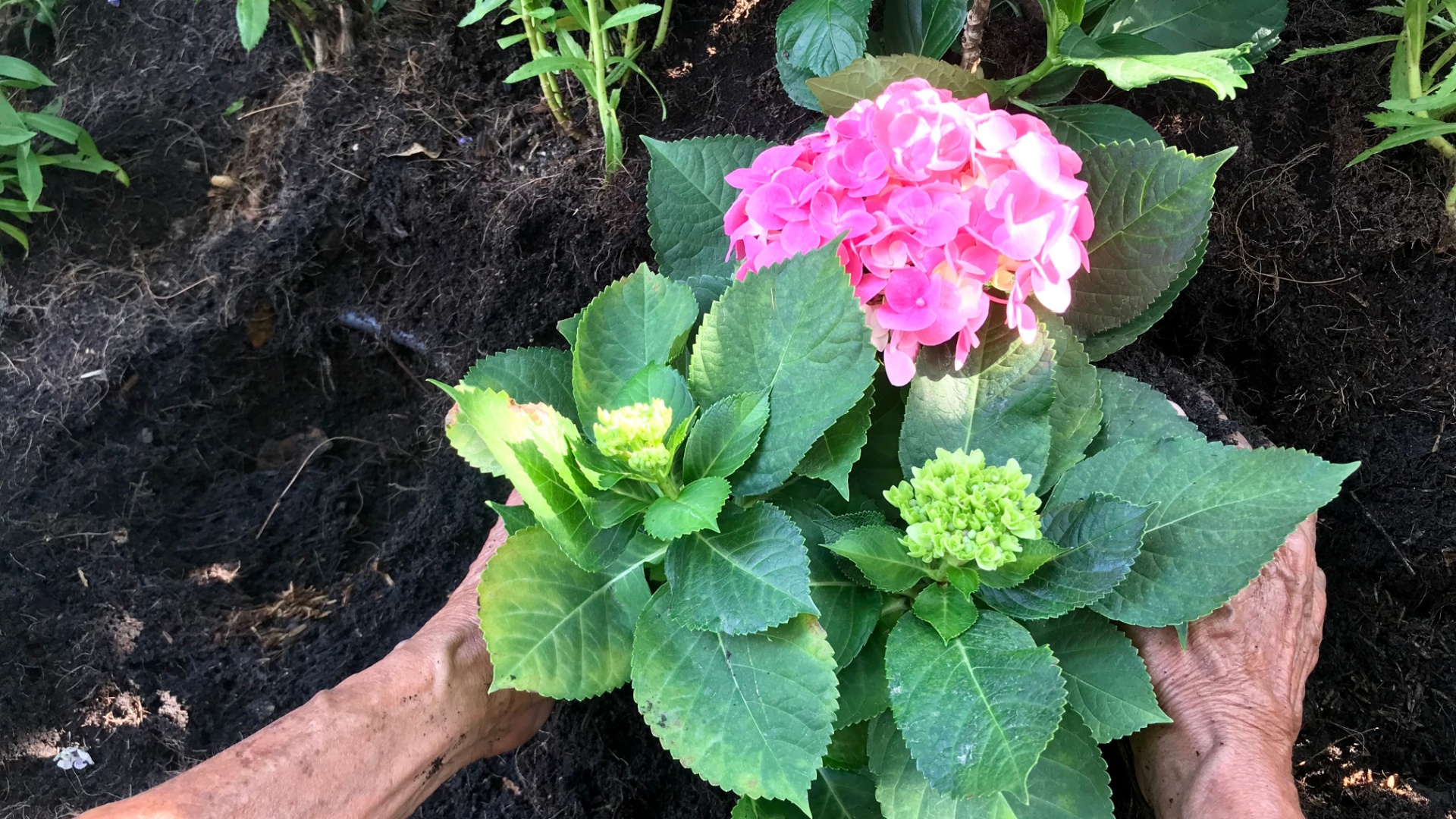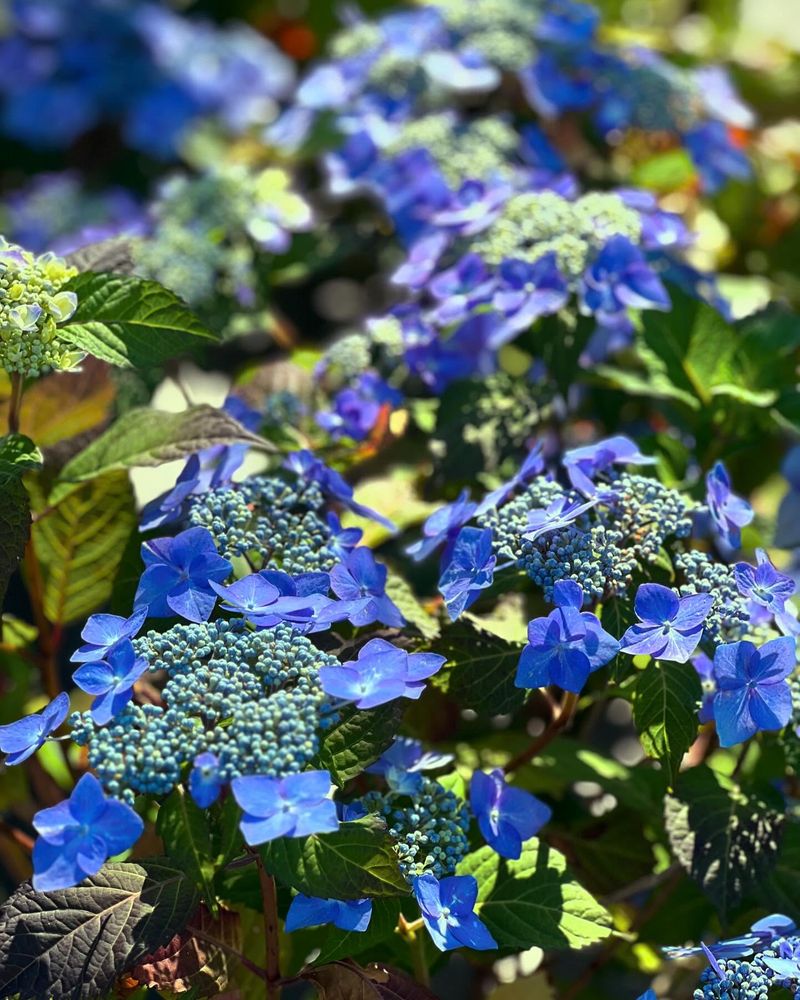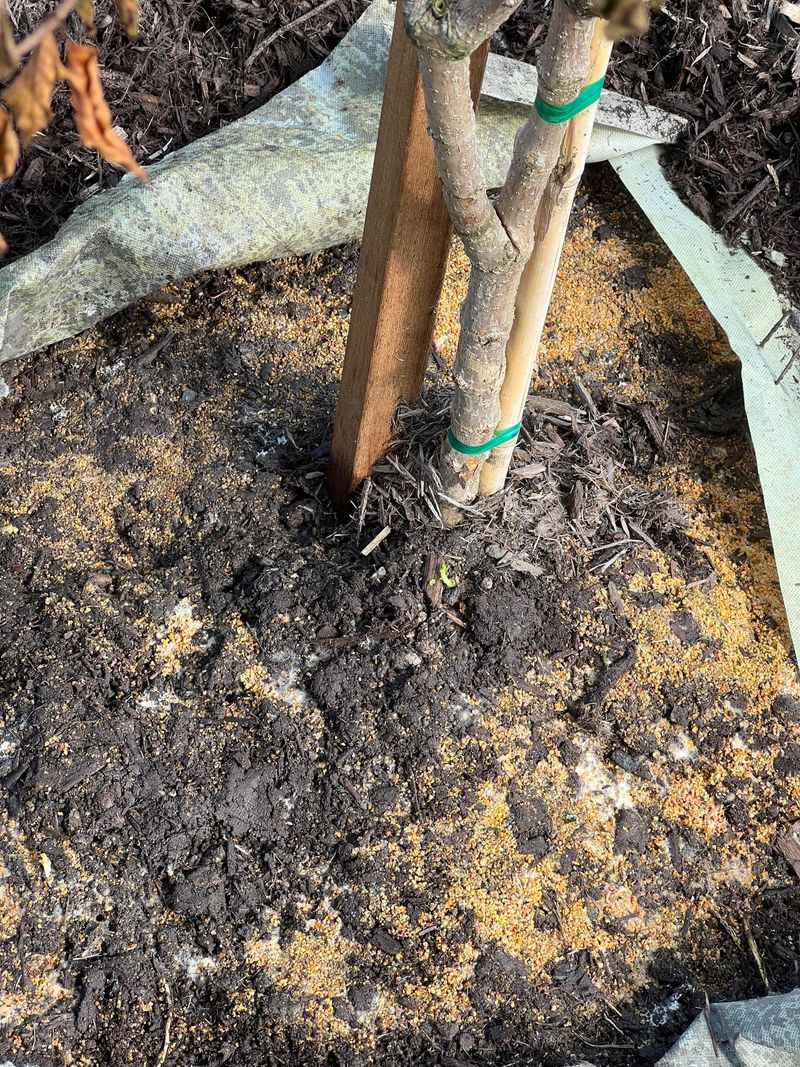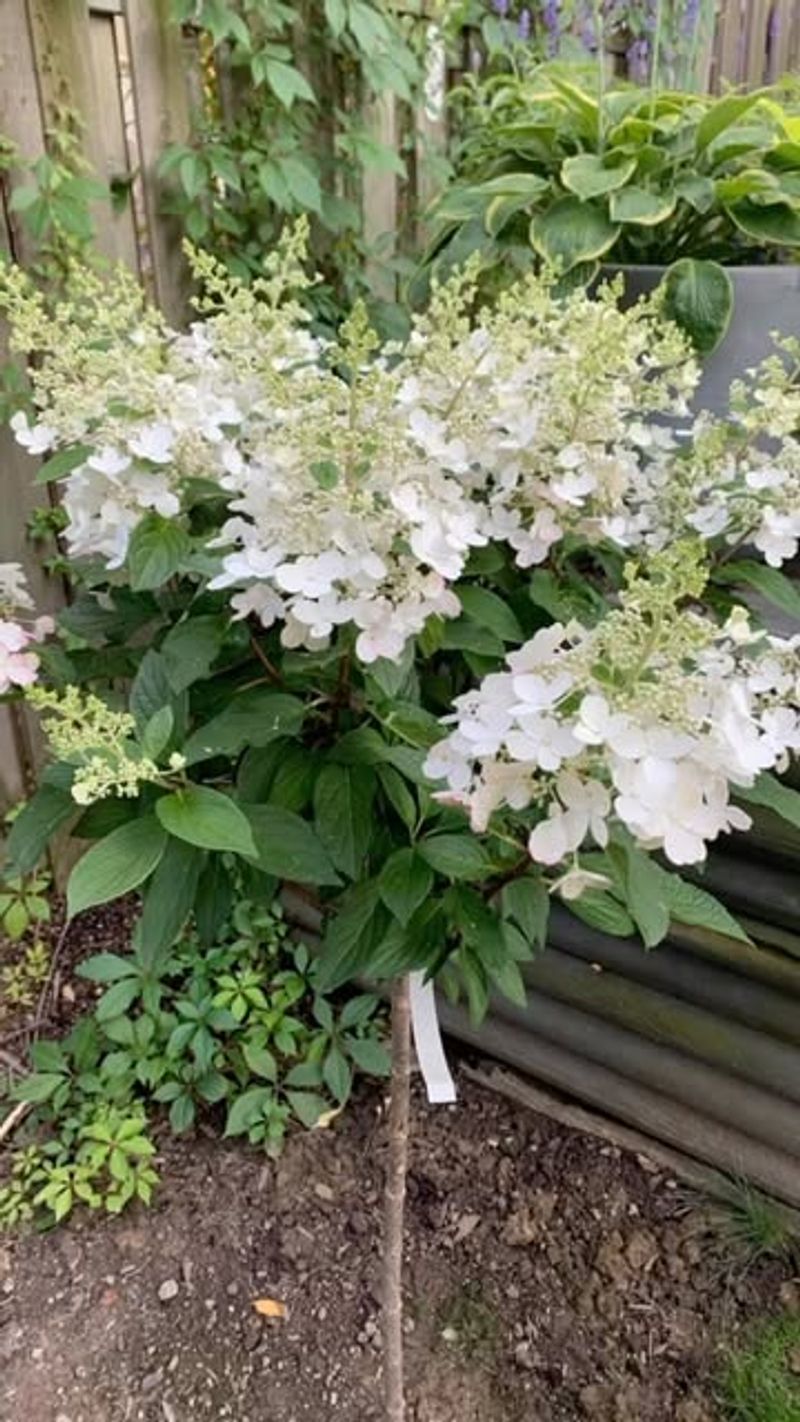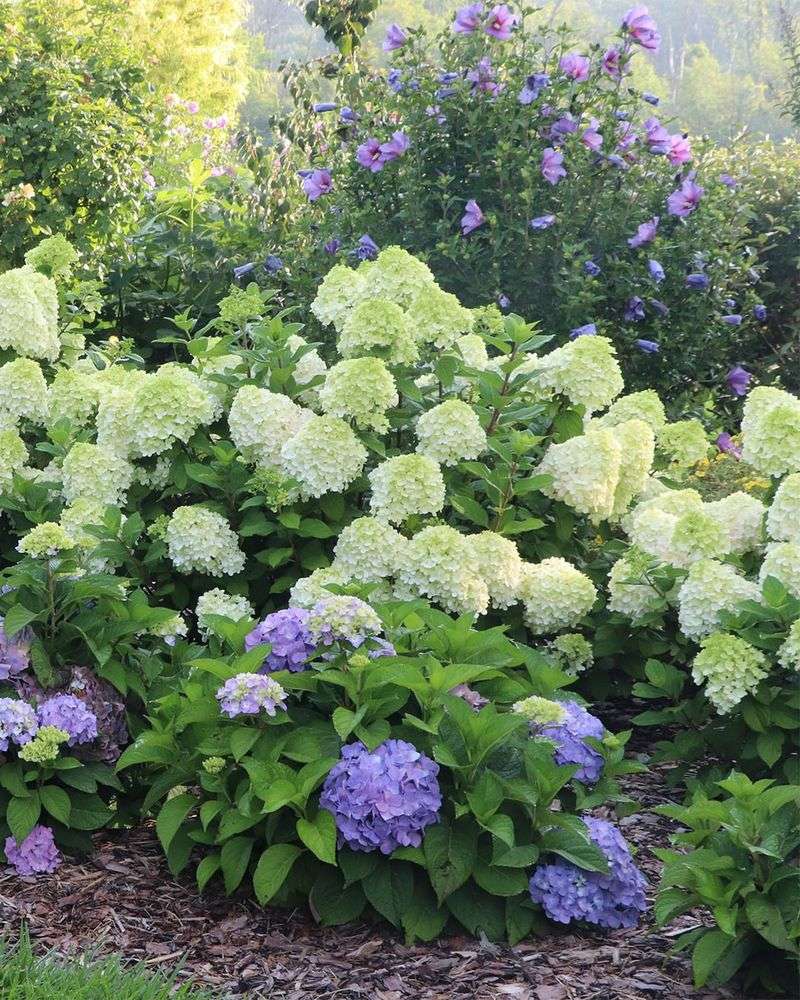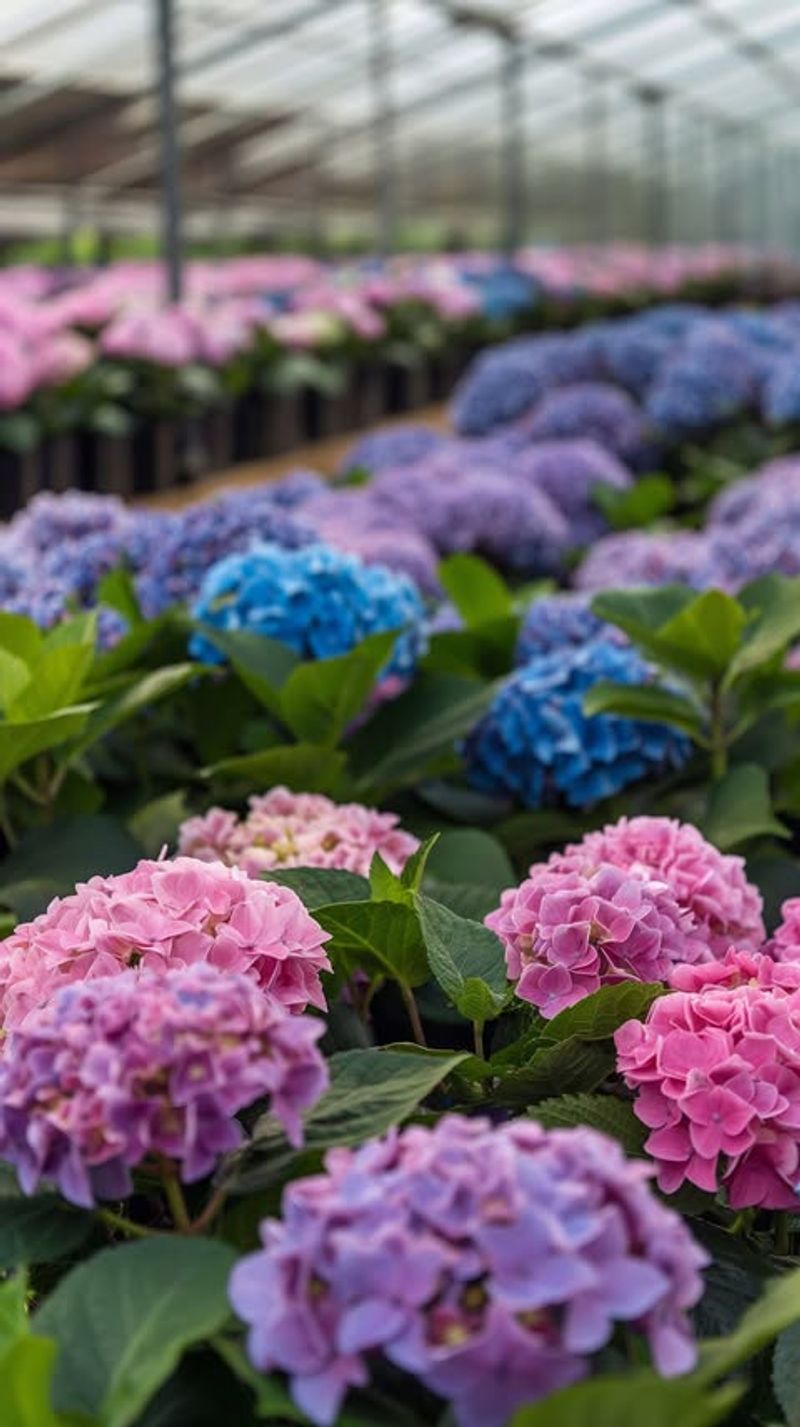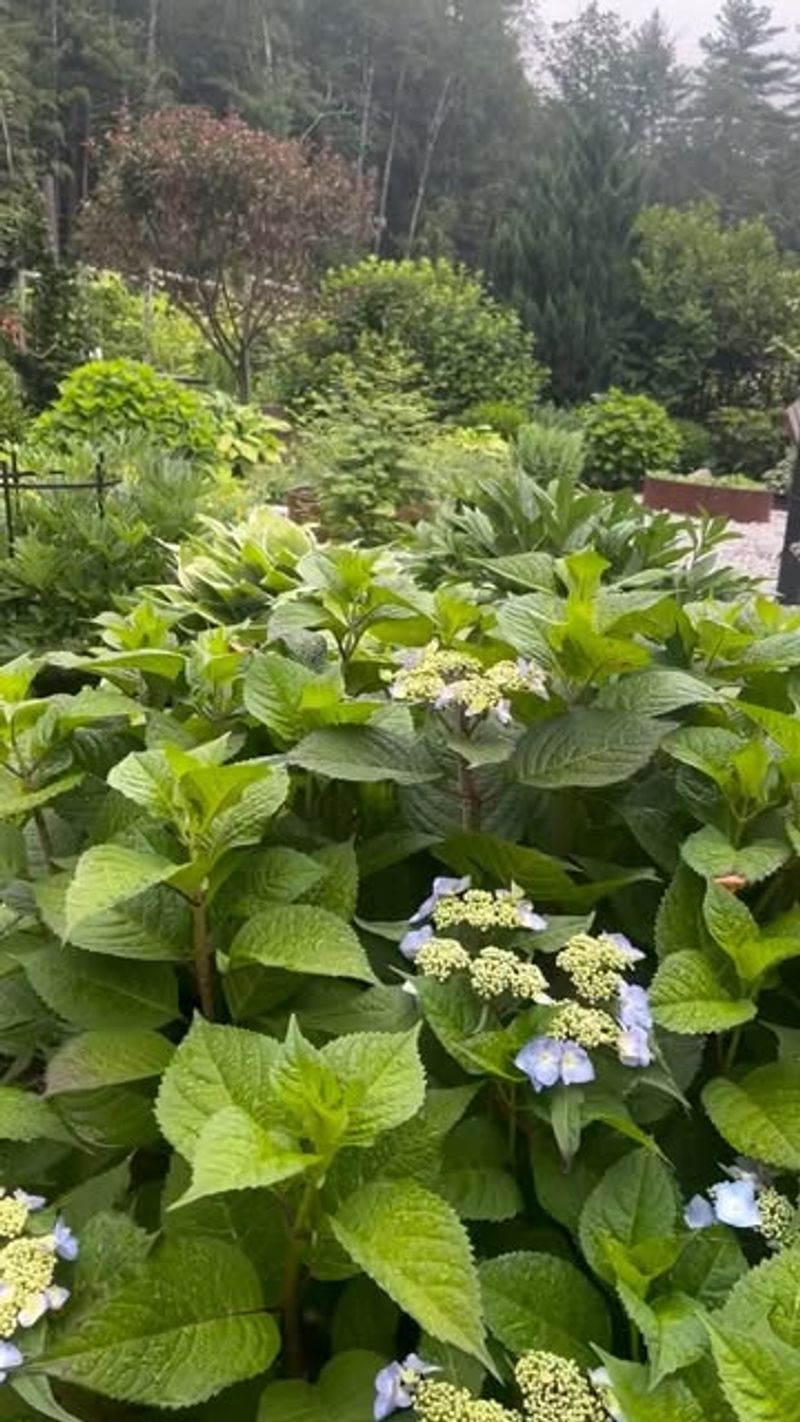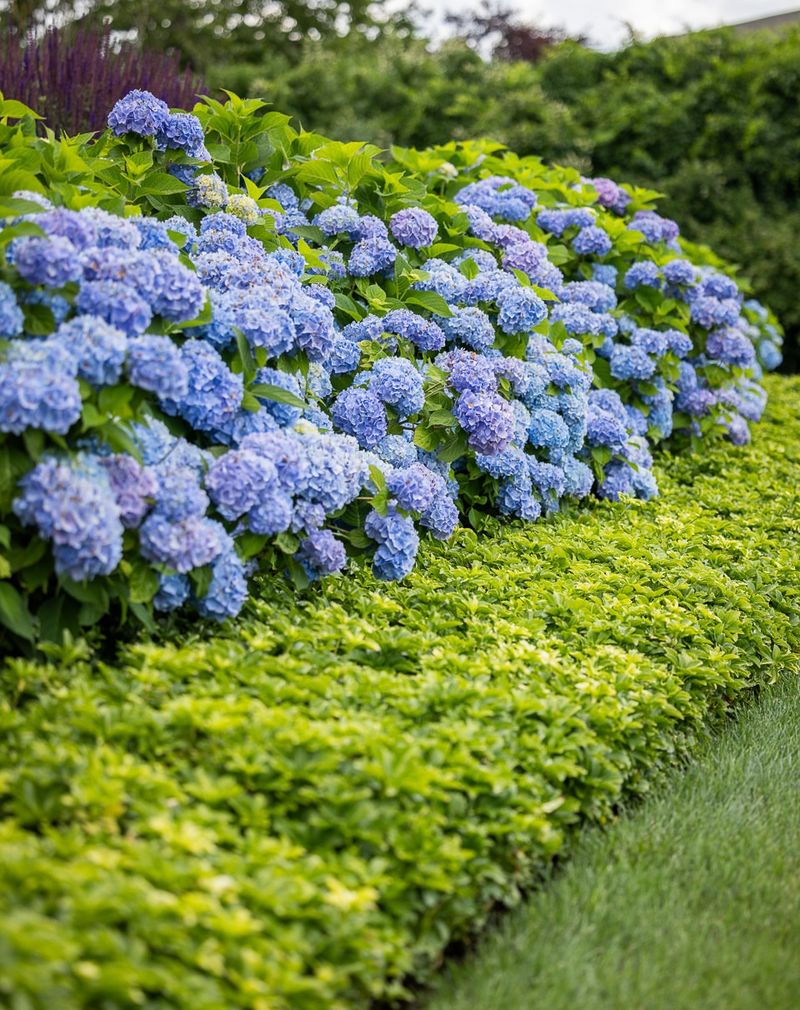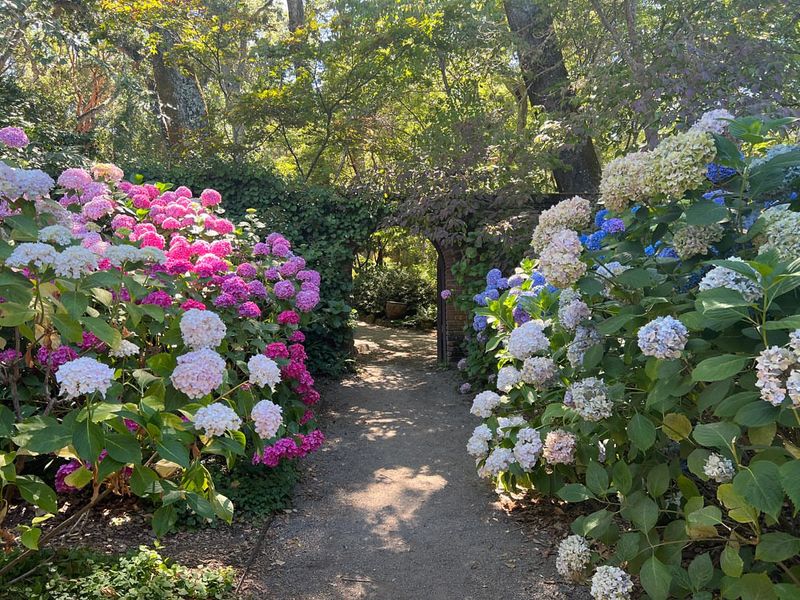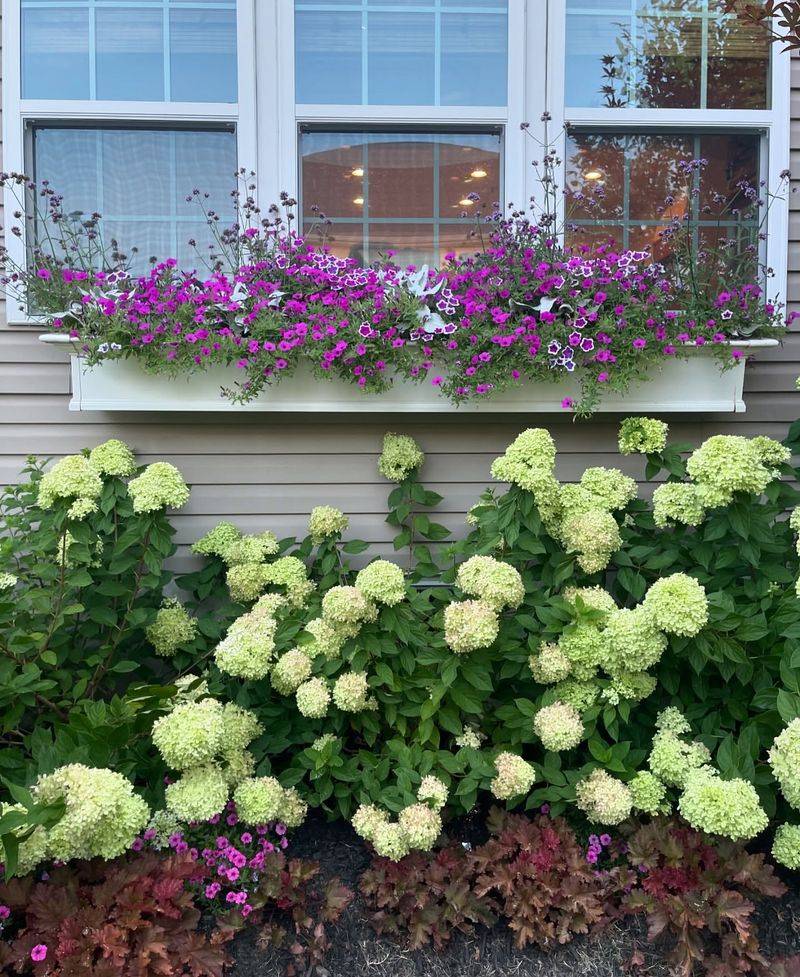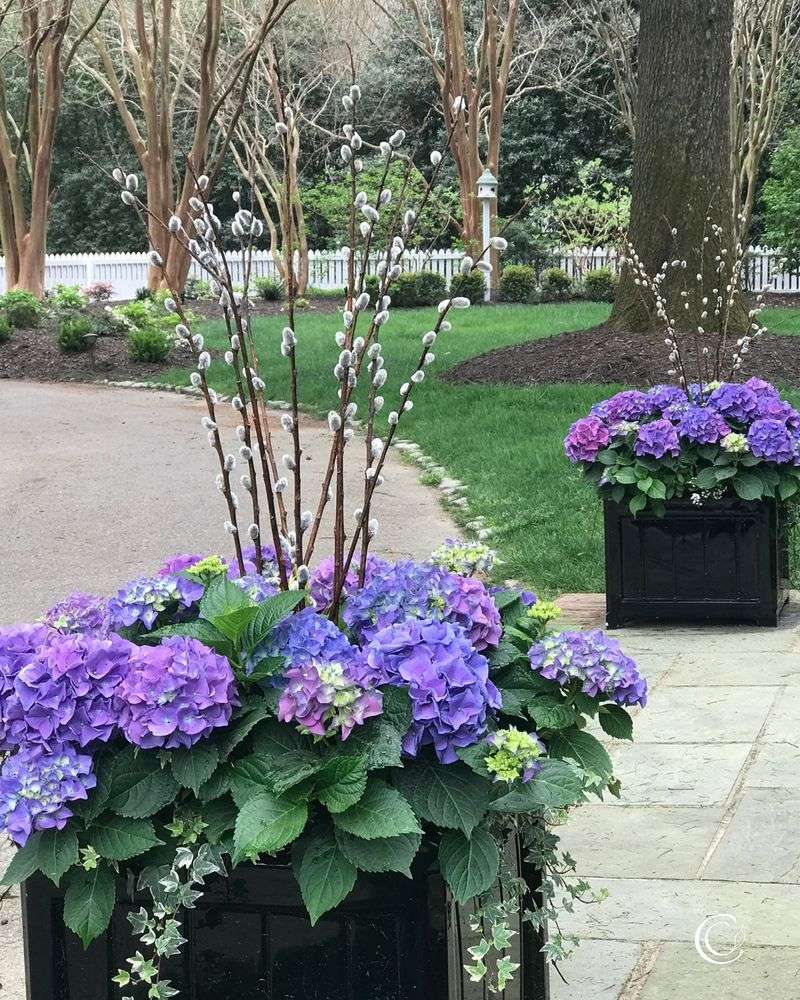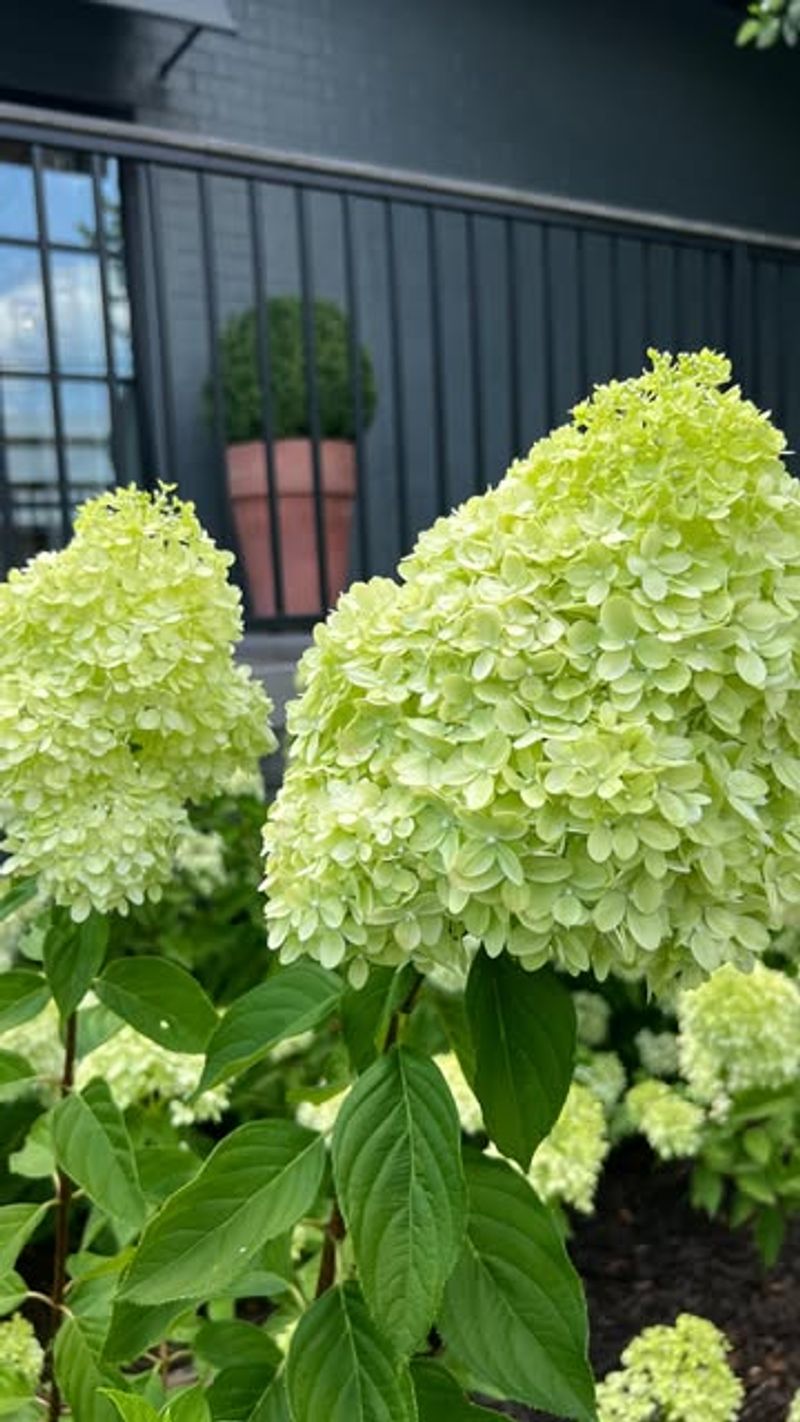Hydrangeas can be the crown jewels of any garden—but only if you plant them in the right place. Stick them in the wrong spot, and you’re barking up the wrong tree: droopy leaves, weak blooms, and disappointment will follow.
But find their sweet spot, and you’ll be sitting pretty with lush color and full blossoms that return year after year. Give your hydrangeas a fighting chance, and they’ll pay you back in petals for seasons to come.
1. Morning Sun, Afternoon Shade
The ideal spot for most hydrangeas offers gentle morning sunshine followed by cooling afternoon shade. This balance protects delicate blooms from scorching while providing enough light for flower production.
Look for east-facing locations where buildings or trees block the harsh afternoon rays. Your hydrangeas will reward you with more vibrant colors and healthier growth when they receive this perfect light combination.
2. Well-Draining Soil Is Essential
Hydrangeas hate wet feet! Plant them in soil that drains well but still retains some moisture. Sandy or clay-heavy soil can be improved by mixing in compost or organic matter. Before planting, dig a hole and fill it with water. If it drains within a few hours, you’ve found a good spot.
Soggy areas will lead to root rot, while proper drainage helps hydrangeas develop strong, healthy root systems for years of beautiful blooms.
3. Give Them Room To Grow
Many gardeners underestimate how large hydrangeas become! Allow at least 3-5 feet between plants, depending on the variety. Crowded hydrangeas compete for nutrients and develop poor air circulation. Space them generously from walls and other plants.
A mature hydrangea needs breathing room to prevent disease and display its magnificent form properly. Remember that some varieties can reach 6-8 feet tall and equally wide!
4. Protection From Strong Winds
Hydrangeas with their large blooms act like sails in strong winds. Plant them where buildings, fences, or sturdier shrubs provide a windbreak without creating too much shade. Wind protection is especially important for varieties with heavy flower heads like mopheads.
A sheltered spot prevents stems from breaking and flowers from being damaged during summer storms, allowing your hydrangeas to maintain their beautiful display throughout the blooming season.
5. Consider Soil pH For Color Control
For bigleaf hydrangeas, soil pH determines bloom color! Acidic soil (pH 5.5 or lower) produces blue flowers, while alkaline soil (pH 6.5+) creates pink blooms. Neutral pH gives purple or mixed colors. Test your soil before choosing a planting spot.
Add aluminum sulfate to increase acidity for blue flowers or lime to raise pH for pink blooms. Remember that white-flowering varieties and oakleaf hydrangeas aren’t affected by soil pH.
6. Near A Water Source
The name “hydrangea” comes from Greek words meaning “water vessel” – a hint about their moisture needs! Plant them where you can easily provide water during dry spells, especially for the first few years. Locations near rain barrels, outdoor spigots, or automatic irrigation make maintenance easier.
Though established plants become somewhat drought-tolerant, consistent moisture produces the most spectacular blooms. Just avoid spots where water pools after rain.
7. Foundation Planting Benefits
Hydrangeas make excellent foundation plants along north or east-facing walls. These locations typically provide ideal light conditions while the house offers wind protection and temperature moderation. Keep plants at least 3 feet from the foundation to avoid the drier soil near building overhangs.
Foundation plantings create a beautiful transition between your home and landscape while allowing you to enjoy the stunning blooms from windows and entrances.
8. Woodland Edge Locations
Many hydrangeas naturally grow as woodland edge plants, making similar spots in your yard perfect locations. The dappled light under tall trees mimics their native habitat. Just be careful about root competition!
Plant hydrangeas at the canopy edge of large trees rather than directly underneath. This natural-looking placement creates a beautiful transition zone between lawn and wooded areas while providing ideal growing conditions.
9. Companion Plants Matter
Choose neighbors that won’t compete aggressively for water and nutrients. Ferns, hostas, and astilbes make excellent hydrangea companions with similar needs. Avoid planting near trees with shallow, spreading roots like maples or willows.
Good companions enhance your hydrangeas’ beauty while creating a harmonious garden ecosystem. Low-growing shade perennials planted in front of hydrangeas create attractive layered plantings.
10. Container Options For Flexibility
Smaller hydrangea varieties thrive in large containers, offering placement flexibility. Move potted hydrangeas to showcase blooms or protect them from harsh conditions. Choose pots at least 18-24 inches in diameter with excellent drainage.
Container planting works especially well for patios, balconies, and regions with challenging soil. Just remember that potted plants need more frequent watering and winter protection in cold climates.
11. Consider Winter Exposure
In colder regions, winter conditions affect hydrangea survival and blooming. Plant varieties that bloom on new wood in spots that receive winter sun and have good air circulation. For hydrangeas that bloom on old wood, choose locations protected from harsh winter winds and late spring frosts.
Northern gardeners might place these more delicate varieties near south-facing walls where snow cover provides natural insulation for roots and stems.

